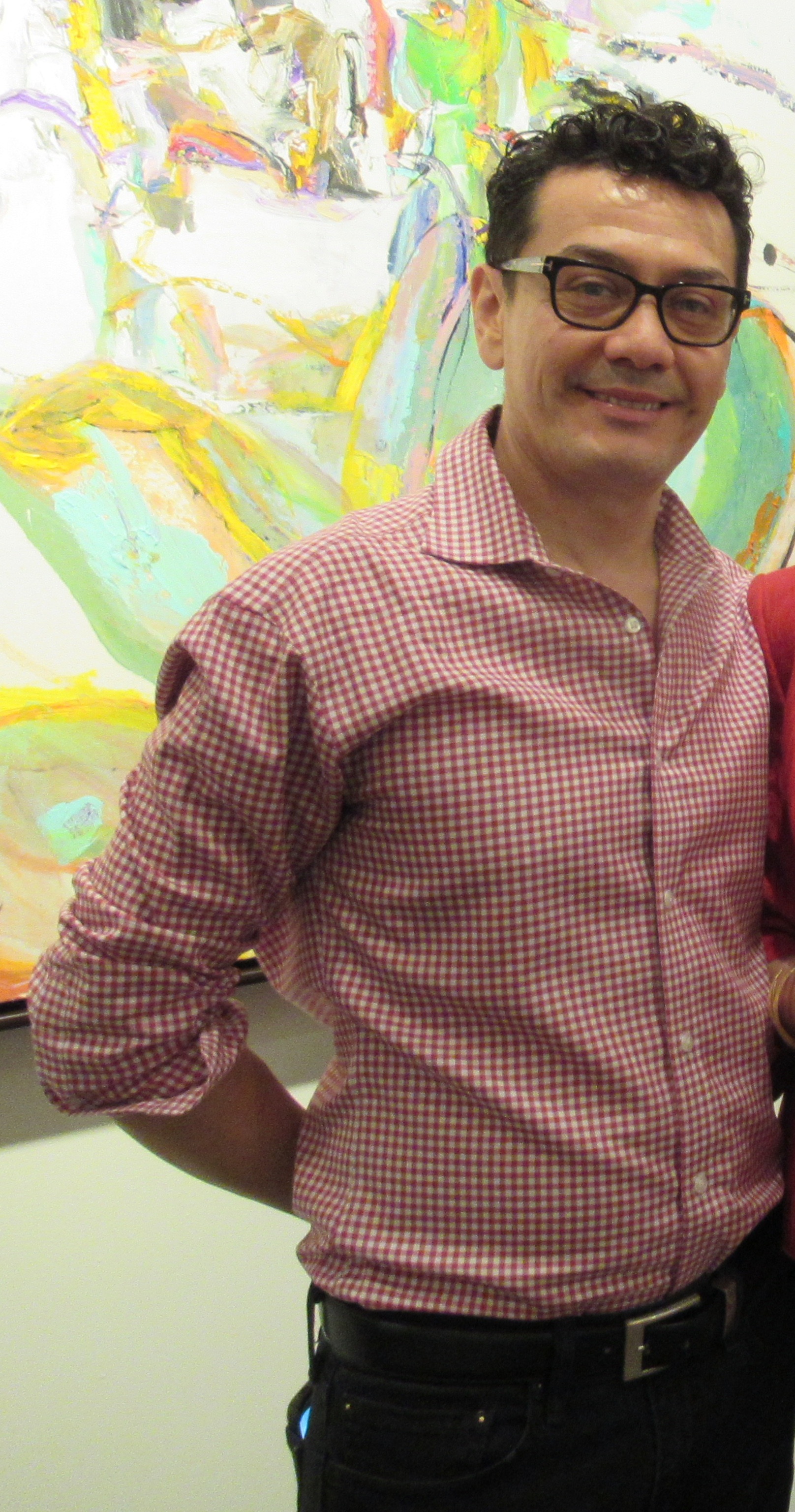Luis-Fernando Suárez
Born in Bogotá, Colombia, at the foot of the Andes, he emigrated to Canada, carrying with him the colours and images of his homeland. A successful graphic designer, Suárez does not have formal art training, but that has never stopped talent from expressing itself. And when that moment for making visible his irrepressible, unrelenting inner vision, he did so with courage and abandon. The physicality of his works is inescapable and overwhelming, but there is no other visual vocabulary to express such an accumulation of emotions and sensations.
Impossibly tactile, the paintings are the result of labour-intensive creative process that has the artist working on the floor, his hands his main tool. He uses a drywall compound that he mixes himself and applies to the canvas before reaching for pigment. In this he echoes the style of pintura matèrica espoused by the Spanish artist Antoni Tàpies, as well as the work of Nicolas de Staël and his trademark use of thick impasto. Matter reigns in Suárez's pictorial universe, creating ridges and folds, crevices and fissures, molding an alien landscape of the imagination. Suárez finds expression in the cracks and wrinkles that mark the surface of his paintings; to him they hide a mystery both artistic and human. His inchoate, enigmatic abstractions resemble geological formations, at times faded, peeling murals erased by time, compositions that seem to continue on a silent journey beyond the artist's intervention. Suárez suspends his work intuitively, allowing the space to shuffle into position organically, driven by its own force. This self-negating approach is but partially unconscious. Suárez wants the viewer to feel and to sense, and this in itself is an intention that spurs him to creative action. And when he embarks on an artwork, the past seeps in with the smells and colours of Colombian savannah, finding its way into this oblique landscape where vast expanses of sombre colour are marked with a touch of red that lines the dark 'horizon' and trickles down from the cracks like blood. The analogy is not entirely farfetched, for the artist often cuts himself on the sharp ridges of his textured surfaces. The subdued palette adds to the sensation of nature and earth, of something being born, slowly releasing itself from the constraints of the matter. And while that particular work resembles natural formation, another looks like giant ancient Chinese symbol eroded by time, barely visible under the heavy layer of mixed media. It undulates beneath a golden sheath, moving, shape-shifting with each glance. Suárez works in large format mainly, the ochre-toned painting discussed above measuring 72 x 56 inches, yet invariably, each work seems to spill out of its confines, resembling but a fragment excised from a giant landscape. Such is the case with a quiet, almost monochromatic two-toned composition resembling a river crossing pale green mountains. There's certain elegance in the economy of both form and colour, but soon the many details in the surface begin to emerge, altering the reading of the work. Instinct-driven, Suárez has no preconceived notion as to the composition when he begins the process of painting, suspending it as intuitively as he began. The result is as compelling as it is intriguing, for the viewer is left entirely alone do read the painting. The answer-cum-advice is simple, rather than trying to decipher the image, the object is to feel it and allow it to play upon the imagination, and perhaps memory, for ultimately every work of art is an expression of something remembered. [Excerpt from Dorota Kozinska’s “Un-Earthing the Self”]










